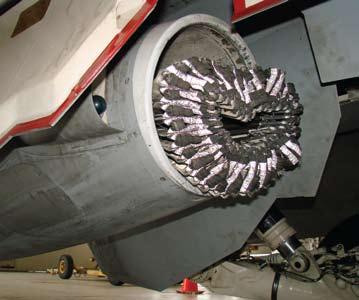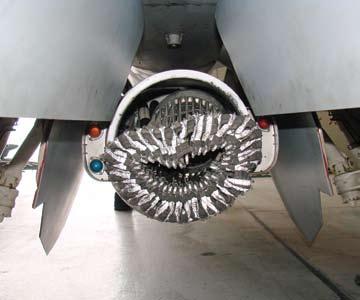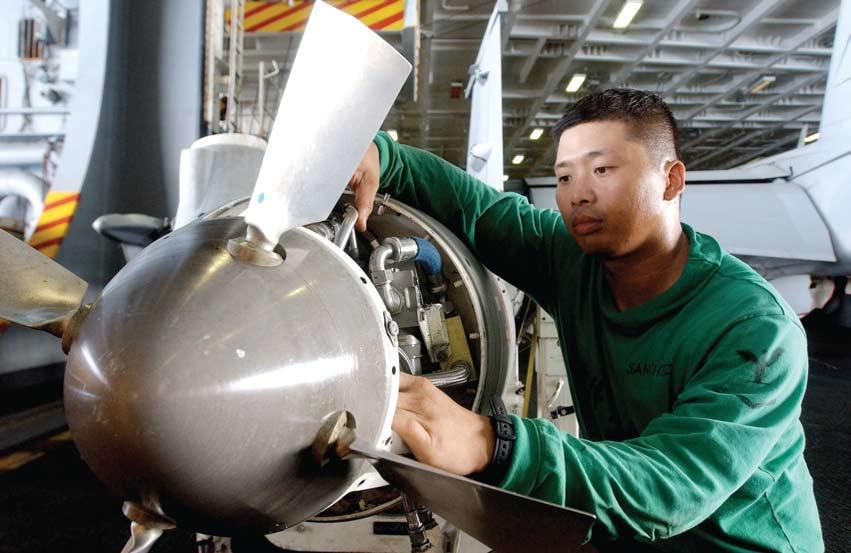
3 minute read
Assuming Is a Bad Thing
from Spring 2008
By AO2(AW) Jason Binney and AO3(AW) Briggs T o say things had become routine during the last few weeks of a six-month combat cruise is an understatement. The constant repetition of for the guillotine check, using the AWM-102 tester to complete this function. Typically it works great; however, this time it was acting up. I had to spend some certain maintenance procedures led team members to extra time with the tester before using it. Back in the make assumptions that ended in a memorable incident. cockpit, AO3 Briggs removed the safety controls on the
We were on our last hour of night check. We needed ARS control panel and was ready to test the system. to arm the jets for the morning flight schedule and to Normally, the CADs are removed from the aircraft do an air-refueling store (ARS) guillotine check. We had during testing, so they do not actually fire when the done these procedures countless times on cruise. As system is tested. The test is done to make sure the the CDI, I thought that Fast Eagle 106 required these firing process works from the cockpit, in case aircrew
Advertisement
checks, so my team member and I signed out our tools, went to the roof, found the jet, and went to work. We did not put our job into “work” in NALCOMIS before we left maintenance control. We found 106 and assumed the jet was not armed; we implicitly trusted our shipmates to leave the jet unarmed before the tests.
Upon reaching the jet, AO3 Briggs climbed into the cockpit and prepped the necessary switches for the test. I stayed underneath the jet and prepared the ARS pod

have to sever the refueling hose in flight. Since we trusted that the CADs had been removed, we did not verify whether they actually were installed in the ARS pod.
Since the AO3 knew how long the prep work took, she had a built-in timer for this test. After waiting the normal amount of time, she engaged the firing switch in the cockpit. As it turns out, the CADs were installed, so they blew. The hose was cut, and the refueling basket
Working on a “buddy store” requires attention from the blades to the basket.

Navy photo by PH3 Shannon Renfroe
fell to the flight deck. Fortunately, no one was injured when this happened.
After realizing what had happened, we notified maintenance control. They asked us why we had tested 106 when we were supposed to check 113. This is where all the pieces of the puzzle came together. We had confused the side number needing the checks, and we likely would have realized our mistake had we used NALCOMIS.
In addition to the side number mix-up, we also chose to do this test with two people, instead of three. A third person is essential to this test because the person in the cockpit cannot communicate directly with the person underneath the jet. Had that middleman been there to relay communications between the two of us, we could have avoided firing the cad, cutting the hose, and damaging the ARS pod.
The biggest mistake we made was assuming the CADS had been removed. Assuming anything as a maintainer, particularly for an ordnanceman, is fraught with danger. The jets we maintain are weapons, and we always should treat them as “loaded guns,” no matter what the circumstances. Verifying that the jet is dearmed takes about as long as it takes to say it. We had no excuse for not having verified the jet was dearmed or for not using a checklist.
While no one was injured by this incident, we did nearly $15,000 worth of damage to the ARS pod and disabled a valuable air-wing asset. Furthermore, we tarnished our squadron’s stellar reputation as the air wing’s “Golden Wrench” unit. We went to captain’s mast for this error and subsequently lost our qualifications. We are now team members working to regain them.
We would like to be able to go back and change what happened, but we can’t. We were a bit fatigued and gethome-itis had set in. But when the routine becomes too routine, it’s time to be extra careful.
Petty Officers Binney and Briggs work in the ordnance shop at VFA-41.





